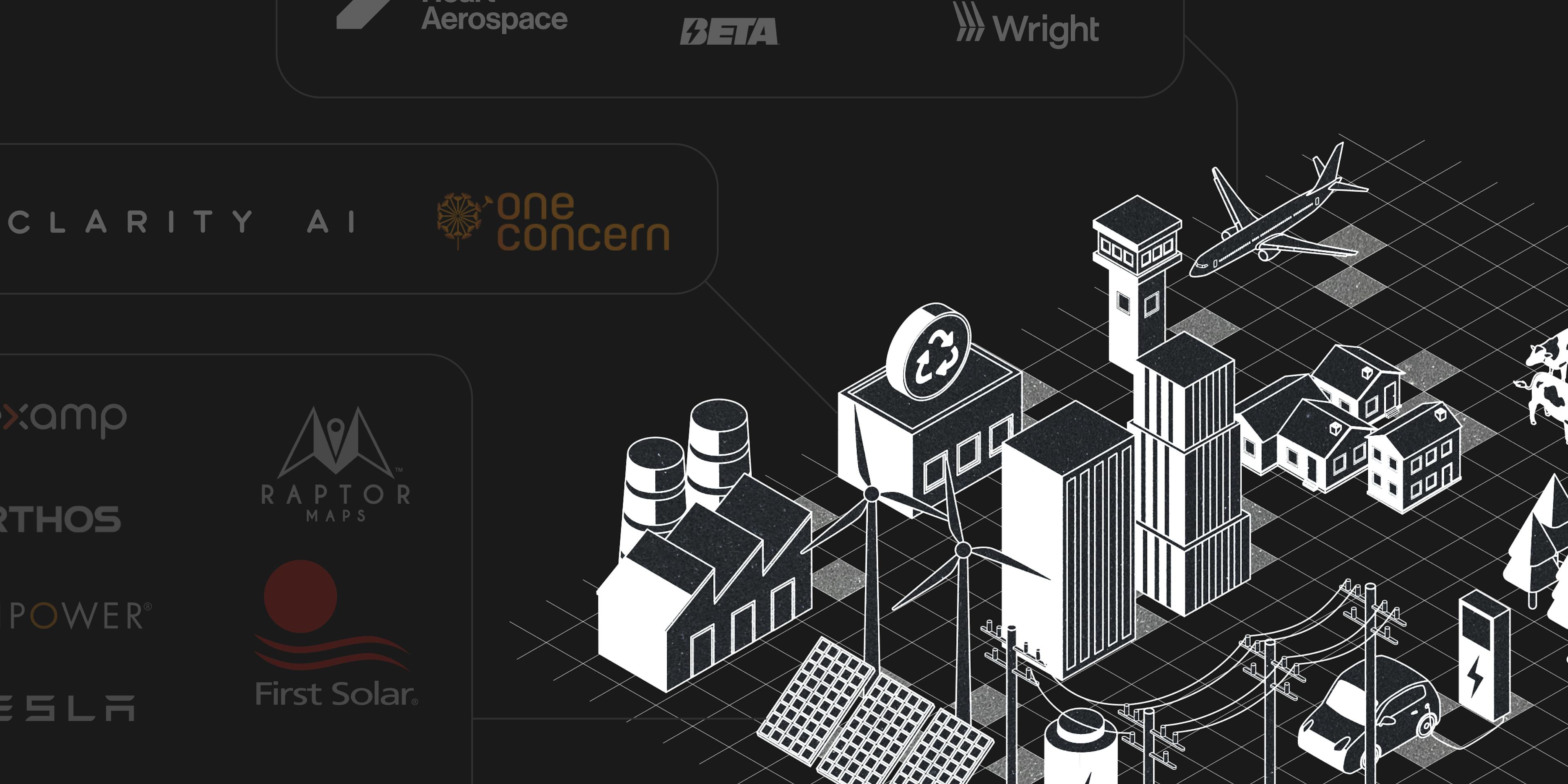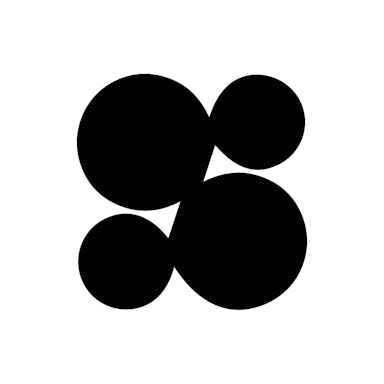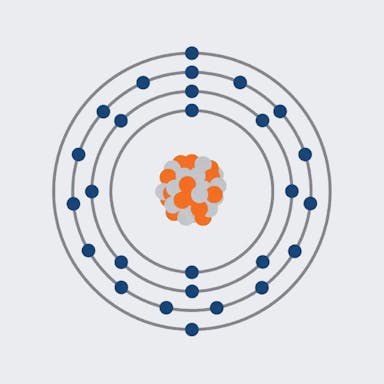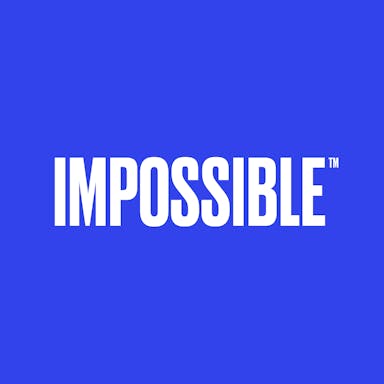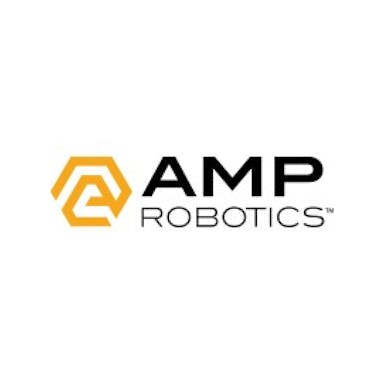This market map is intended to be dynamic - login to Figma to leave comments and we'll update periodically.
Carbon-Based Products
Aether Diamonds: Sequestered carbon dioxide used to create diamonds for jewelry.
Air Company: Conversion of sequestered carbon to alcohols and fuels sold as perfumes, sanitizers, and jet fuel.
Monolith: CO2 free, methane pyrolysis to create carbon black (used for rubber goods) and hydrogen fuel for vehicles and energy storage.
Twelve: Plug-and-play devices using water and sequestered CO2 to replace fossil fuels and create feedstocks for manufacturing plants.
Air Protein: Air, water, and renewable energy are combined in cultures to produce protein which is then purified, dried, and used to create a wide variety of meat-like products.
Waste Management & Recycling
AMP Robotics: (Full Memo) Computer vision and robotics combined to identify and sort recycled material while removing contaminants.
Trove: Recommerce platform helping brands evaluate, buy back, and resale products to reduce waste.
Bolder Industries: converting end-of-life tires into carbon black, oil, steel and energy.
Evrnu: Creating forever recyclable clothing from textile manufacturing waste materials and end-of-life textiles and clothing.
New Materials
Solugen: (Full Memo) Developing bio-based chemical goods through engineered enzymes to replace the petroleum based goods like water conditioners, plastics, fertilizers, etc.
Bolt Threads: Bio-based materials replacing traditional silk, leather, skincare, and other cosmetics.
Keel Labs: Ocean-focused textiles company converting plants like seaweed into yarn.
Checkerspot: Bio-based and recycled materials company using everything from algae to reclaimed fiberglass to produce everything from skis to fabrics and lubricants.
MycoWorks: Harnessing the power of mycelium (fungi) to create leather alternatives.
Natural Fiber Welding: Bio-based production of leather alternatives, fabrics, footwear insoles, foams, and more, with a focus on easy end-of-life materials.
RWDC Industries: Replacing single-use plastics like bags and utensils through microbial fermentation.
VitroLabs: Instead of leather alternative, VitroLabs uses a small cowhide biopsy to grow leather in a bioreactor in a fraction of the time it takes for a cow to grow.
Ecovative Design: Using mycelium (fungi) foundries to create packaging, foam, clothing, meat substitutes, and more.
Carbon Capture & Release Prevention
Carbon Clean Solutions: modular point source carbon capture systems for manufacturing plants.
Crusoe Energy Systems: Discourages flaring by using excess natural gas from energy companies to power anything from data centers to cryptocurrency mining.
Svante: solid sorbent carbon capture filters for industrial flue gas streams.
Verdox: Efficient CO2 capture device using voltage instead of heat to filter the gas out.
Kairos Aerospace: airborne and spaceborn Methane emission detection to prevent leakage.
Remora: Tailpipe emission capture for semi-trucks, sold to long-term carbon storing company and as credits. Profits are split with customers so the devices pay for themselves.
Energy Generation
Solar
Aurora Solar: (Full Memo) Quick, remote designs for roof-top solar systems using aerial imagery built alongside a payments and proposal platform.
Nexamp: Community solar company allowing residents to subscribe to local solar farms in exchange for credits reducing their monthly electricity bills.
Heliogen: This solar thermal energy company uses mirrors to concentrate sunlight on a receiver which is then converted to heat energy to produce electricity on demand through steam.
Mosaic: Democratizing residential solar and home improvements by connecting 3rd party contractors with customers through a financing platform.
Erthos: Earth mounted solar panels (no walls or roofs needed), cutting down on cleaning costs, disaster risk, building costs, and more to achieve the same electricity generation.
Raptor Maps: large scale solar project management, optimizing efficiency through ML and aerial photography.
First Solar: Solar panel production with up to 19% efficiency.
SunPower: vertically integrated solar panel producer offering consultation, pricing, and design help.
SolarEdge Technologies: Energy technology company spanning across solar panels and solar optimization along with energy storage and EV charging.
Tesla: Best known for design and monitoring visibility, Tesla solar panels combine with the Powerwall battery and Tesla app to give homeowners control over their energy production.
Hydrogen
Plug Power: Replacing conventional batteries with hydrogen fuel cells for equipment, vehicles, and backup generators.
Bloom Energy: Modular fuel cell stacks powered by solid oxide technology which converts natural gas, biogas, or hydrogen into electricity without combustion.
Syzygy Plasmonics: Eliminating fossil fuel combustion from chemical manufacturing by using light to power energize chemical reactions, allowing reactors to switch to cleaner fuel sources like hydrogen.
BayoTech: Reducing the barriers of switching to hydrogen fuels by producing it locally leading to low costs and delivery times.
Electric Hydrogen: Industrial scale hydrogen electrolizer equipment that is easily scalable due to the modular system design, enabling abundant hydrogen fuel production on-site.
Infinium: Combining CO2 and green hydrogen to produce low carbon electro fuels such as eDiesel used in large scale transportation without engine modifications.
Hydra: “Hydrogen-as-a-Service” company specializing in truck fleet retrofitting and hydrogen refueling stations.
Fusion & Fission
Helion: (Full Memo) Shipping container sized fusion systems using deuterium and Helium-3 in hopes of producing unlimited energy without the need for heat or steam.
CommonWealth Fusion: Traditional ARC tokamak designed fusion energy reactors based on plasma physics and magnets.
NuScale Power: small modular reactors (SMRs) to replace nuclear fission projects with smaller, safer, more efficient reactors ready for commercialization.
General Fusion: Investing in magnetized target fusion (MTF) to create limitless energy.
ITER: International collaborate project based in France, where countries are coming together to build a tokamak reactor using magnetic confinement fusion (MCF) to prove viability.
Zap Energy: Fusion energy without the need for magnets or lasers, made possible through sheared-flow-stabilized Z-pinch, using electricity to create magnetic fields strong enough to compress matter.
Avalanche Energy: Employment of the Orbitron method to product fusion energy by confining high-speed ions.
Wind
Windscape AI: Wind energy optimization through AI monitoring weather patterns by way of pressure sensors to predict wind gusts.
Other
Quaise Energy: Developing advanced drilling technology to harness geothermal energy from up to 12 miles underground at a lower cost and shorter timeline.
Fervo Energy: Geothermal energy with less land and capital impact due to horizontal drilling techniques.
Amogy: Extracting clean energy from ammonia through a proprietary catalysts which converts ammonia into hydrogen for use in fuel cells.
Lumen Energy: SaaS for commercial structures to assess, finance, and implement clean energy systems at scale, allowing for the generation of revenue.
Battery & Energy Storage
Batteries
Form Energy: Through iron-air batteries, Form Energy can store grid scale energy for up to 100 days at a competitive cost.
Stem: AI driven analytics for battery storage optimization, solar monitor and control applications, and utility scale energy trading.
Highview Power: Liquid air energy storage (LAES) for grid demand management and long-term energy storage.
Energy Vault: This simple, yet complex approach to storage known as gravity-based energy storage uses excess energy during non-peak hours to raise large weights which can be lowered to produce energy during deficits.
Antora Energy: Transferring excess solar and wind energy into thermal batteries by way of intensely heating carbon blocks which can dispatch heat and energy during deficits.
e-Zinc: Replacing traditional batteries with low-cost, high-density zinc metal energy storage.
EnerVenue: Extremely modular energy storage vessels focusing on long-term durability and zero maintenance.
Mitra Chem: Focused on iron based cathodes leading to a 90% decrease in battery production time allowing for battery supply to meet current demands.
Noon Energy: Long duration energy storage through flow battery technology.
Quidnet Energy: Bypassing the need for elevated terrain, Quidnet Energy converts subsurface rock laters into energy storage reservoirs, known as geomechanical pumped storage.
Titan Advanced Energy Solutions: Ultrasound focused battery inspection company providing real-time battery defect detection and algorithm based pattern tracing.
VoltaGrid: Turnkey backup energy storage systems to provide microgrid reliability with reduced emissions.
Malta: Using electro-thermal energy storage systems, Malta converts electricity into heat within molten salt and cold within chilled liquid for long-term energy storage.
Zitara: Battery performance optimization software using physics and ML for predictive insights and enhanced longevity of energy storage.
Home Batteries
Span: Home energy storage and management with a focus on integration with legacy hardware, easy manageability through the app, and cost savings.
Tesla: Home energy storage with a vertical business also offering EVs, solar panels, and consumer technology apps for customizability.
Lunar Energy: Home backup battery to increase resilience, also offering compatability with solar panels.
Sila Nanotechnologies: Using nanoengineered silicon particles, the company produces lithium silicon batteries, replacing graphite anodes and lowering to cost of batteries.
Group14 Technologies: Developing performance based silicon anodes for lithium-ion batteries.
Battery Recycling
Redwood Materials (full memo): Recovering valuable lithium-ion battery materials at up to 95% efficiency rates using high heat ovens, for recycled anode and cathode use.
Ascend Elements: Its hydro-to-cathode process uses water to recycle valuable battery materials for cathode production.
Nth Cycle: Partners with recyclers, miners, and refiners to offer on-site electro-extraction, recovering minerals from electronic waste and scrap materials.
Battery Material Extraction
EnergyX: Direct lithium extraction technology enables EnergyX to extract lithium from brine more efficiently at a lower impact.
KoBold Metals: (Full Memo) Metals exploratory company leveraging AI and Earth crust data to identify deposits of critical materials, decreasing drilling of unsuccessful mines.
Lilac Solutions: Eliminating the need for evaporating ponds with a new lithium extraction techniques from brines.
First Mode: Cleaning industries from mining to manufacturing by retrofitting and electrifying facilities and machinery for governments, companies, and individuals.
Transportation
Electric Vehicles (EVs)
Proterra: Developer of electric transit buses and battery systems for heavy-duty vehicles.
Inspiration Mobility: EV asset financing for commercial fleets.
Revel: With the goal of electrifying public transport in cities, Revel has built charging infrastructure and shared electric fleets spanning cars, mopeds, and more.
Tesla: Pioneer of EVs making luxury cars mainly focused on advanced technology like self driving, design, and electrification through supercharging, solar, and more.
Rivian: Manufacturer of EV trucks and SUVs, aiming to capture the large American market for large vehicles.
Lucid Motors: EV manufacturer focused on the luxury and high performance or sports car market through partnerships with Aston Martin.
Polestar: EV producer originally focused on racing, now producing consumer vehicles and partnering with Volvo.
BYD: Electric mobility company with products spanning automobiles, buses, bicycles, trucks, and forklifts based out of China.
NIO: China based designer and producer of premium designed EVs.
Aptera: Aerodynamic focused auto manufacturer intent on building the most energy-efficient EV with up to 1,000 miles of range combined with hood placed solar panels.
Other Vehicles
Arc Boats: Develops luxury, all-purpose consumer electric boats with hydrofoil technology for high speeds and efficiency.
Pure Watercraft: Electric outboard motors allowing for emission-free propulsion, easily adaptable to boats using traditional, combustion outboard motors.
Kodiak Robotics: Autonomous driving fleets of electric long-haul trucks.
Lightship RV: Develops electric RVs with solar panels and battery storage for off-grid travel and adventure.
Monarch Tractor: Completely electric, driver optional tractors focused on agricultural efficiency.
Parallel Systems: Decarbonizing freight by adding autonomous, electric freight to existing railroad tracks.
Superpedestrian: Shared, urban mobility through electric scooters.
EV Charging
ChargePoint: International EV charging network with over 240K ports with a software platform for easy manageability by the location owner.
Electrify America: Fast-charging network built across the US offering single charges and memberships to EV owners.
ChargeLab: EV Charger Operating system for charger manufacturers, turnkey installers, and network operators.
ChargerHelp!: Charing station support providing on-demand repairs and maintenance of EV charging stations.
Tesla: The company has built a network of 45K+ superchargers across North America, previously only for Tesla owners but now serving the broader EV market.
Fermata Energy: Bidirectional charging technology allowing EVs batteries to supply the grid, buildings, and homes while compensating the EV owners.
SparkCharge: No-installation-needed EV charging using portable DC fast chargers designed to operate without the grid, anywhere they are needed.
EV Battery Technology
Factorial Energy: Producing solid-state batteries with an energy density 50% larger than the average lithium-ion battery, leading to longer drive ranges.
Liminal Insights: Leverages ultrasound and ML to analyze battery cells in a non-destructive way to enhance quality, performance, and affordability of EV batteries.
Zitara: Battery performance optimization software using physics and ML for predictive insights and enhanced longevity of energy storage across an entire EV fleet.
Sila Nanotechnologies: Using nanoengineered silicone particles, the company produces lithium silicone batteries, replacing graphite anodes and lowering to cost of batteries.
Proterra: Developer of electric transit buses and battery systems designed specifically for heavy-duty vehicles by housing the technology in commercial grade material.
Air Transportation
Ampaire: Plug-in hybrid-electric airplanes, currently with 9 seats and just over 1K miles of range with low emissions.
ZeroAvia: Hydrogen-electric aviation manufacturer targeting planes with 19 seats and 300 nautical miles of range by 2025.
Universal Hydrogen: Developing accessible hydrogen fueling infrastructure through modular capsule transport, to support the aviation transition.
Boom Supersonic (Full Memo): supersonic passenger aircraft manufacturer using sustainable aviation fuel (SAF) mad from algae, waste oils, forest residue, and other feedstocks.
Vertical Aerospace: Building electric vertical takeoff and landing (eVTOL) aircrafts for urban mobility.
Heart Aerospace: Focused on electric and electric-hybrid regional air travel, offering a 30 passenger plane by 2028.
Beta Technologies: Passenger and cargo eVTOL manufacturer also providing charging stations to power its vehicles.
Wright: Decarbonizing many industries including aviation (100 passenger electric planes for 1 hour travel), combat portable generators, electric plane motors for other manufacturers.
Grid & Infrastructure
Arcadia (Full Memo): Unifying global utility data on energy usage, cost, and more to power decision making for individuals and businesses.
NovoGrid: Grid visibility software for renewable energy developers allowing easy connection to the local grid, asset performance monitoring, and flexible control of energy flows.
Singularity Energy: Giving grid operators, utilities and others grid emissions data and ML predictions, allowing for real-time decision making to optimize costs and carbon emissions.
WeaveGrid: Promoting rapid EV adoption by connecting utilities, original equipment manufacturers (OEMs), and consumers to ensure there is ample energy to charge the growing fleet.
Amperon: Electricity AI analytics platform generating more accurate net demand forecasts for retailers, public power utilities, energy traders, and more.
LineVision: Non-contact sensors combined with predictive analytics to increase the safety of power lines and prevent outages and natural disasters.
Camus Energy: Making renewable energy easier to integrate by helping grid operators monitor, forecast, and control relationships with local resources.
David Energy: Retail energy provider integrated with smart home devices, EVs, billing systems, and more to deliver tailored energy programs and pricing.
Leap: Connecting energy providers to the wholesale market to increase grid resiliency while generating revenue for distributed providers.
LevelTen Energy: Renewable transaction infrastructure accelerating connections and deals between energy buyers, sellers, advisors, and financiers
Phaidra: Virtual power plant (VPP) AI co-pilot improving site stability and efficiency.
Enode: Brings 400+ energy devices into one platform so consumers can save money, take control, and reduce emissions in a single place.
Tesla: Large batteries integrated with Tesla’s software allow energy retailers to maximize the value of their stored energy and manage microgrids through various autonomous systems.
Scale Microgrids: Provides comprehensive microgrid solutions by being an energy consultant and capital partner, allowing sites to bypass traditional hurdles.
Salesforce Energy & Utility Cloud: Extends Salesforce Customer 360 for the energy and utilities industry. It helps businesses establish presence online, and manage operational efficiency.
Data & Finance
Insurance
Kettle: Reinsurance underwriting platform to reinsure insurers anticipating climate change induced events and destruction.
Arbol: Using weather data indicies to inform a climate risk pricing platform, allowing for risk adjusted underwriting operations.
Omnidian: Residential and commercial solar system management and lifetime performance assurance.
Plover Parametrics: Software for insurers to quickly design and manage parametric insurance products
Supply Chains & Logistics
ClimateAi: Enterprise climate resilience platform which uses supply chain and logistics data to inform expansion decisions, predict problems, and recommend solutions.
SupplyShift: Bringing transparency to supply chains by connecting buyers and suppliers on one platform focused on responsible sourcing, ESG risks, and sustainability reporting.
Nautilus Labs: Advancing ocean commerce efficiency through AI driven predictions to lower fuel consumption and collaboration software for stakeholders.
Bearing.ai: Carbon Intensity Indicator (CII) rating prediction and analysis through AI to ensure maritime shipping vessels are within compliance.
Remora: Tailpipe emission capture for semi-trucks, sold to long-term carbon storing company and as credits. Profits are split with customers so the devices pay for themselves.
Risk Analysis & Prevention
Floodbase: Satellite data leveraged to create real-time flood mapping while also analyzing local flood exposure for unaffected areas.
Jupiter: Climate disaster risk analytics for asset owners to ensure accurate capital planning, site selection, logistics, and more.
First Street Foundation: Making flood, wildfire, wind, and extreme heat risk data accessible.
Torch Sensors: Early fire detection sensors which can identify flames as small as 2x2 feet.
Rain Industries: Fire detection, response, and containment by pairing existing fire detection systems with its autonomous aircrafts stationed around high-risk areas.
Gridware: Grid health monitoring system built of small sensors attached to power poles integrated with a visualization platform.
Pano AI: AI to detect, confirm, and plan responses to wildfires quicker.
OroraTech: Wildfire risk assessment and detection through a satellite network.
Decarbonization
Aspiration: Eco-friendly banking tool offering cash management, verified carbon credits, non-fossil fuel investment accounts, and more.
Turntide: Decarbonizing energy-intensive industries by electrifying industrial vehicles, making buildings and agriculture sites more efficient, and more.
Project Canary: Collects data for energy organizations for insights surrounding risk assessment, emissions, and decarbonization leading to greater performance.
Xpansiv: Making environmental commodity prices transparent through a global marketplace and market data updated every 30 minutes.
Bend: Public site for companies to track, query, and upload their CO2e emissions data for anyone to view.
Investment Analysis
Measurabl: Platform built for real estate investors to measure, manage, disclose, and act on ESG data.
Clarity AI: Integrated within a company’s tech stack, Clarity AI can analyze and report on sustainability impacts, risks, and regulatory compliance.
One Concern: Tool for capital markets, insurance, and real estate representatives to evaluate potential damage to infrastructure and the subsequent downtime.
Built Environment: Creation
Construction & Materials
Brimstone: Carbon-negative, cost-competitive Portland cement and cementitious materials.
Boston Metal: eliminating the need for coal in steelmaking through molten oxide electrolysis (MOE), producing zero-carbon green steel.
Electra: Producing low-emission clean iron for use in steelmaking through a low-temperature, electrochemical-hydrometallurgical process.
Tangible Materials: Centralizing carbon management for embodied carbon projects to easily track and report emissions.
Sublime Systems: Low-carbon lime used for cement production through an electrochemical system using renewable energy and calcium.
Heirloom: Carbon-negative cement created sequestering CO2 through direct air capture (DAC) and embedding it in cement.
Financing
Banyan Infrastructure: Sustainable infrastructure financing platform for banks, lenders, and developers to quickly drive capital to renewable energy projects.
Built Environment: Operating
Energy Efficiency, Decarbonization, and Retrofitting
Tado: Smart thermostat system to reduce energy consumption.
Dandelion Energy: Geothermal heat pumps compatible with existing infrastructure in common residential homes, replacing furnaces and AC units.
Aeroseal: Air duct and vent sealing to increase efficiency of new and existing HVAC systems.
BrainBox AI: AI system which learns, adjusts, and optimizes HVAC systems based on usage, weather, energy markets, and other factors.
BlocPower: Making real estate energy-efficiency projects easy by bringing project scoping, financing, management, and maintenance under a single umbrella.
Gradient Comfort: Replacing home window AC units with space-saving units based on heat pump technology using climate-friendly refrigerants.
Menlo Micro: Optimizing electronic switches by combining electromechanical and solid-state switches, making home appliances and outlets more efficient.
Redaptive: “Energy-as-a-Service” provider which funds and installs energy-generating and energy-saving assets.
Rondo Energy: Converting Low-cost, intermittent electricity into heat by warming heat batteries which can deliver the heat when buildings require it.
Therma°: Combines AI, IoT sensors, and equipment controls to manage HVAC and refrigeration systems, reducing energy and food waste.
OhmConnect: Flattening the energy demand curve through a free platform which incentivizes users to decrease energy consumption when the grid is struggling to meet demand.
Sealed: From qualification to assessment and installation, Sealed handles home upgrades including air sealing, insulation, HVAC, and other smart home technology.
Kestrix: Accurate building retrofit assessments through thermography (captured by drone imagery) and AI which identify heat leaks.
Thalo Labs: Software and hardware systems to measure GH emissions, capture CO2 at the source, and decrease future emissions.
First Mode: Cleaning industries from mining to manufacturing by retrofitting and electrifying facilities and machinery for governments, companies, and individuals.
Carbon Management
Carbon Dioxide Removal (CDR)
Living Carbon: Genetic engineering to decrease energy waste and fungal composition by trees thus improving growth and carbon capture.
Charm Industrial (full memo coming soon): Takes the CO2 captures by biomass (e.g. agricultural waste), converts it into carbon-rich liquid, and pumps it into retires oil wells.
Heirloom: Carbon-negative cement created sequestering CO2 through direct air capture (DAC) and embedding it in cement.
Climeworks: CO2 removal by way of direct air capture (DAC) fans using a carbon filter and low-temperature heat.
Carbon Engineering: CO2 removal by way of direct air capture (DAC) fans using potassium hydroxide.
LanzaTech: Carbon recycling technology which uses microbial gas fermentation to convert pollutants into building platform chemicals (blocks for necessary products).
Global Thermostat: CO2 removal by way of direct air capture (DAC) fans using a carbon filter and low-temperature heat.
Noya: CO2 removal by way of direct air capture (DAC) fans with low energy demands.
Climate Robotics: Infield pyrolysis processing system to generate bio char, both sequestering carbon and improving agricultural soil health.
Carbon Credit Marketplaces
Patch* (Full Memo): Unified platform for companies to assess, purchase, manage, and integrate carbon credits spanning many project types.
Pachama (Full Memo): Nature-based carbon credits verified through satellite imagery, Lidar, and more and sold to businesses and individuals.
Watershed (Full Memo): B2B platform and tools to help enterprises measure, report, reduce and, offset their emissions.
Commons: Personal carbon emissions tracker leveraging transactions to calculate a personal footprint, recommend reductions, and offer carbon credits to offset the rest.
Nori: Carbon credit marketplace for businesses to purchase offsets specifically focused on regenerative farming practices.
Stripe Climate: Automated contributions to carbon removal projects through partial allocation of revenue.
EcoCart: Carbon neutral checkout integration for any e-commerce business allowing customers to quickly offset emissions at checkout.
NCX: Preventing deforestation through carbon credits which incentivize large land owners to not cut down trees.
Carbon Accounting & Reduction
Watershed (Full Memo): B2B platform and tools to help enterprises measure, report, reduce and, offset their emissions.
Persefoni (Full Memo): Helps businesses measure, report, and reduce carbon emissions with an emphasis on regulatory requirements and easy tracking.
Pledge: Tools for transportation and logistics companies to understand, report, and reduce emissions without the need for complex integrations.
Sinai Technologies: Tools for emissions measurement, scenario analysis, and decarbonization strategy all to report and reduce emissions.
Carbon Direct: Decarbonization platform with tool to measure, reduce, and remove carbon as well as services to build equitable climate action plans.
Planet FWD: Quick carbon footprint calculations of individual products (or a company) so sellers can reduce emissions and report back to their customers.
Yard Stick: Hardware and software to measure, report, and verify soil carbon on farms, ranches, and more.
Normative: Analyzes a businesses transactions in the accounting system to calculate a carbon footprint, identify reduction opportunities, and more.
Commons: Personal carbon emissions tracker leveraging transactions to calculate a personal footprint, recommend reductions, and offer carbon credits to offset the rest.
Reforestation
Mast Reforestation: Seedlings optimized for post-wildfire reforestation planted with drones and tracked while using carbon credits for funding.
Terraformation: Forest carbon accelerator which helps early land restoration teams gain the skills and funding necessary to be successful.
Dendra Systems: Restores ecosystems through field ecology, satellite imagery, and AI all used to aid and track aerial seeding programs.
Food Engineering & Waste Prevention
Food Engineering
Impossible Foods (Full Memo): Plant (soy and potato) based meat alternatives including beef, chicken, pork, and more.
Beyond Meat: Meat alternatives made of plants like peas, mung beans and rice spanning steak and beef to chicken and jerky.
Meati: Mycelium (mushroom root) based meat alternatives, currently offering variations of chicken and steak.
Upside Foods: Cultivated meat grown by taking a single cell of meat, feeding it nutrients over a two to three week period, then harvesting it.
Air Protein: Protein made with nothing but air, water, and energy through a technique called air fermentation, resulting in a protein rich flour used to create meat products.
Atomo Beanless Coffee: Coffee alternative made using upcycled nutrients like date seeds, grape, tea for caffeine, and more instead of coffee beans, decreasing water use, emissions, food waste, and deforestation.
Minus Coffee: Beanless coffee made from cocoa nib, cherry, brown sugar, and more to avoid heavy water use, emissions, and more that are threatening the coffee industry.
C16 Biosciences: Sustainable alternative to oils and fats, beginning with palm oil, through fermentation.
MycoTechnology: Specializing in alternative protein enhancement using mushroom mycelia to provide ingredients to better nutrition, taste, texture, and more.
Nature’s Fynd: Microbe-based fermented proteins for meat and dairy substitutes from breakfast patties to cream cheese.
Nobell Foods: By engineering plants to grow the dairy protein casein, Nobell Foods has created a plant-based cheese with the feel of dairy cheese.
Perfect Day: Precision fermentation used to generate whey protein without lactose, cholesterol, hormones, or pesticides.
Plantible Foods: Plant-derived proteins from the aquatic, nutrient dense plant lemna which requires 10x less water than soybeans and 100x less than beef.
New Age Eats: Plant-based pork sausages with the taste and feel of real pork.
Source Global: Renewable water supply through Hydropanels which use solar power to extract clean water from the air.
Farm Emission Reduction
Blue Ocean Barns: Reducing livestock emissions with Brominata, a red seaweed-based supplement which causes cattle to retain more nutrients instead of burping methane.
Symbrosia: Red seaweed-based cow feed additive, reducing livestock methane emissions by over 90%.
Beta Hatch: Converting mealworms and their byproducts into protein and nutrients for plant soil and animals.
Food Waste Prevention
Upcycled Food Association: Nonprofit with a mission to prevent food waste, often through consumer product certifications.
Full Harvest: Works with food suppliers to identify edible surplus and imperfect produce that would otherwise go to waste to help these suppliers sell to food manufacturers.
Apeel: Plant-derived post-harvest solution to keep produce fresh for longer by creating an optimal microclimate around the produce to reduce food waste.
Mori: Protective layer made of silk protein to keep meat and produce fresh by slowing dehydration, oxidations, and microbial growth.
Hazel Technologies: Produce “shied” to slow respiration rates and increase the produce’s resistance to natural gases and fungi that accelerate spoiling.
Afresh: Grocery inventory management and forecasting platform focused on fresh produce.
Mill: Kitchen bin that transforms leftovers into food grounds for chickens to be picked up from the owners home at their convenience.
Agriculture
Regenerative Farming
Pivot Bio: Fertilizer that captures nitrogen from the air, converts it into ammonia, and directly feeds the roots on corn and other cereal crops.
Vestaron: Peptide-based insecticides for agriculture, animal health, and other non-crop related applications, made without fossil fuels and safe for pest predators.
Indigo: Using microbes to boost crop performance and stress tolerance then helping farmers benefit from their improvements with registry-issues carbon credits.
Kula Bio: Biofertilizer which pulls nitrogen from the air, into the soil, and into plant roots, all while keeping excess nitrogen in the soil to avoid runoffs.
Climate Robotics: Infield pyrolysis processing system to generate bio char, both sequestering carbon and improving agricultural soil health.
Nitricity: on-site nitrogen fertilizers production with renewable electricity instead of fossil fuels.
Precision Agriculture
Carbon Robotics: AI-driven robots that use lasers for precision weeding and thinning in specialty vegetable crops, simultaneously monitoring field conditions for future assessment.
Sound Agriculture: Plant growth optimization through nutrient efficiency (allowing plants to collect more of the available nutrients) and on-demand breeding.
Aigen: AI field robots that navigate, weed, and assess row crops without chemicals, reducing workload and fuel reliance due to solar attachments and regenerative braking.
Advanced.Farm: Robots that replace manual farm labor including hand picking and packing produce.
Arable: Ground-truth sensors combined with data analytics to provide insights on plant yield and quality, pesticide and water usage, supply chains, and more.
Orchard Robotics*: Empowers growers with crop load management and enhanced fruit quality, while providing packhouses and marketers yield estimates and planning solutions.
Ambrook: Accounting and finance tools for farmers to reduce their workload and create easy paths to government sustainability programs.
Vertical & Indoor Farming
Bowery Farming (Full Memo): Vertical farming and AI in controlled environments to enhance yields, producing 100x more food per acre with minimal water and pesticide use.
Plenty: Zero-pesticide produce grown at indoor, vertical farms without the need for sun or soil due to LED lights, hydroponic systems, and autonomous machinery.
Aero Farms: Vertical farming enhanced by a cloth-based growing medium for plant roots and autonomous aeroponic technology.
BrightFarms: Indoor farming done without pesticides and GMOs, requiring less water, land, and shipping fuel.
Infarm: Modular vertical farms relying on real-time monitoring to optimize crop nutrition all while reducing shipping emissions.
80 Acres farms: Fully automated growing facilities relying on AI to ensure the highest plant yields without the need for pesticides.
Agricultural MRV
TerraDot: soil carbon sequestration measurement system with a focus on high integrity for carbon buyers and project developers.
Yard Stick: Hardware and software to measure, report, and verify soil carbon on farms, ranches, and more.
Perennial: Soil MRV platform for project developers to baseline, monitor, and sell carbon offsets while those in the food supply chain can track and rate their emissions.
Regrow Ag: Integrated with farm management platforms and satellite imagery to power sustainable insights, crop growth insights, and its MRV platform.
CIBO Technologies: Uses satellite imagery and AI to verify field practices, simulate ecosystems, and provide insights on emissions factors for land management.
*Contrary is an investor in Patch and Orchard Robotics through one or more affiliates.
